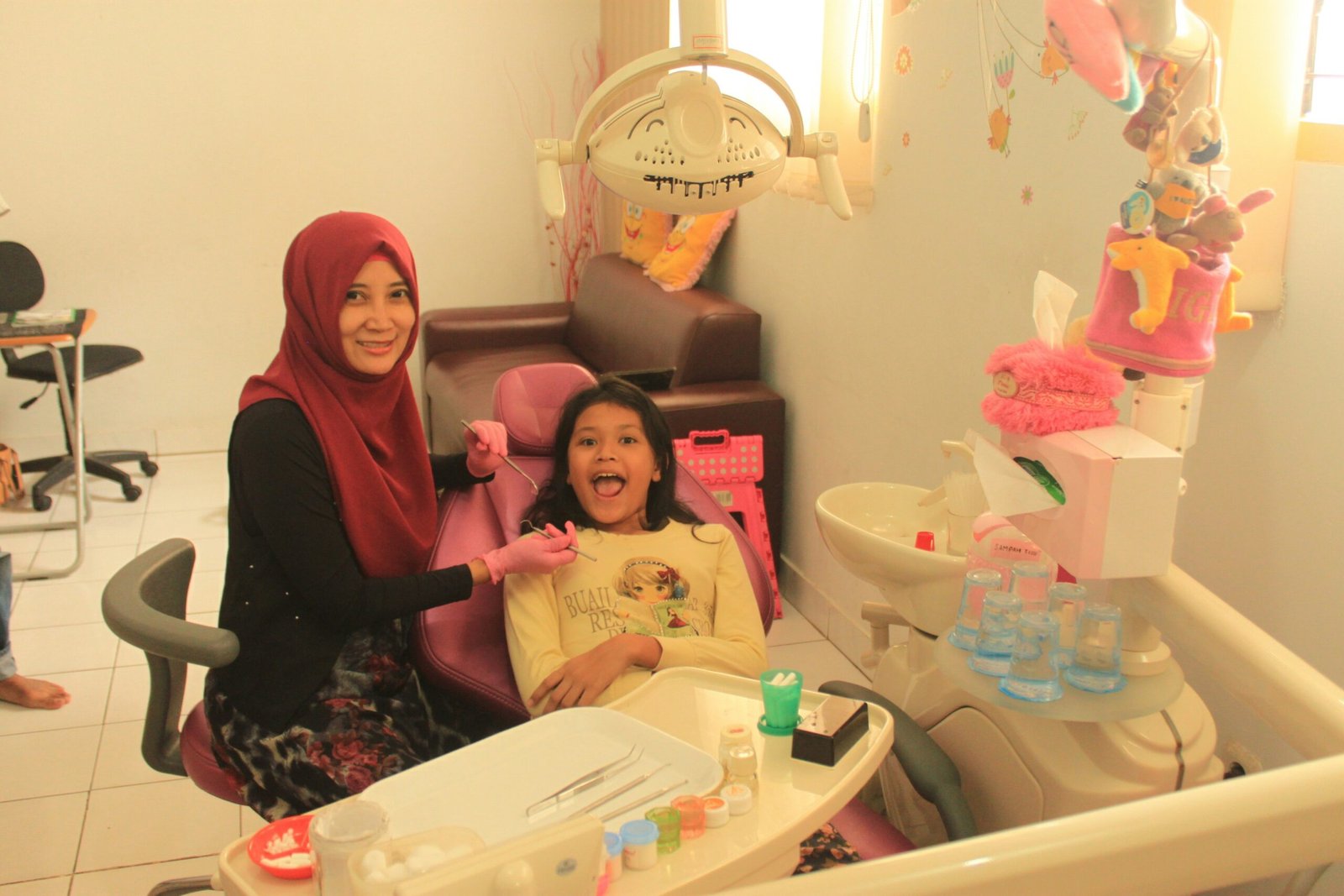When Should My Child Have Their First Dental Visit?
Understanding the Importance of Early Dental Visits
Establishing a foundation for good oral health begins long before a child’s first birthday. Early dental visits play a crucial role in preventing dental issues and ensuring the healthy development of a child’s teeth. The American Academy of Pediatric Dentistry recommends that a child should visit a pediatric dentist by their first birthday or within six months after their first tooth erupts. This proactive approach allows for the early identification of potential dental problems and the implementation of preventive measures.
Pediatric dentists specialize in treating children and possess the requisite training to address their unique dental needs. These professionals create a comfortable and friendly environment that can greatly reduce anxiety associated with dental visits. By establishing a positive relationship with a pediatric dentist early on, children are more likely to develop good oral hygiene habits and maintain regular dental check-ups as they grow older.
Additionally, early visits allow for parental guidance on important topics, such as diet, tooth brushing techniques, and the prevention of oral health issues. During these visits, pediatric dentists often educate parents about common concerns such as teething, thumb sucking, and the implications of early childhood cavities, also known as baby bottle tooth decay. This education empowers parents to make informed decisions regarding their child’s oral care.
Ultimately, understanding the importance of early dental visits helps lay the groundwork for long-term oral health. By prioritizing these visits, parents not only protect their child’s smile but also instill an appreciation and respect for oral healthcare from a young age. This investment in early dental care can lead to significant benefits that contribute to a child’s overall health and confidence as they progress through life.
Recommendations from the American Academy of Pediatric Dentistry
The American Academy of Pediatric Dentistry (AAPD) emphasizes the importance of early dental visits for children’s oral health. According to their guidelines, it is recommended that a child should have their first dental appointment within six months after the eruption of their first tooth or by the time they reach their first birthday, whichever comes first. This recommendation aims to establish a dental home for children at an early age, promoting preventive dental care and enabling parents to receive essential guidance on maintaining their child’s oral hygiene.
These early visits are crucial as they provide an opportunity for pediatric dentists to assess a child’s oral development, offer advice on appropriate oral hygiene practices, and address any parental concerns regarding teething, pacifier use, or thumb-sucking. By scheduling this initial visit early on, parents can help ensure that their child develops healthy dental habits that last a lifetime.
By adhering to the AAPD’s guidelines, parents can set a strong foundation for their child’s dental health, ensuring regular visits from an early age. This preventive practice not only focuses on immediate dental care but also reinforces the importance of lifelong oral health. Scheduling the first dental visit within the recommended timeframe can significantly influence the child’s future experiences with dental professionals.
Signs That Indicate It’s Time for a Dental Visit
It is essential for parents to remain observant of their child’s oral health, as there are various signs that may indicate the need for a dental visit. One of the primary indicators is oral discomfort, which can manifest as frequent complaints of tooth sensitivity or pain. If a child expresses discomfort while eating, drinking, or even during everyday activities, it could be time to schedule an appointment with a dentist. Early intervention can prevent more serious dental issues from developing.
Another common sign that suggests a dental visit may be necessary is a change in eating habits. If a child suddenly becomes reluctant to eat certain foods that they previously enjoyed, particularly those that require chewing, this could be a sign of dental problems such as cavities or gum disease. Monitoring a child’s willingness to engage with their dietary routine can provide valuable insights into their oral health status.
Visible signs of tooth decay are perhaps the most apparent indicators that a dental visit is overdue. Parents should routinely check for dark spots, holes, or significant discoloration on their child’s teeth. These symptoms are often an early warning system for cavities or other dental issues. Additionally, the presence of persistent bad breath, despite good oral hygiene practices, can indicate an underlying dental concern that needs addressing.
Parents should also consider scheduling a dental visit if they observe changes in their child’s overall oral hygiene routine, such as an increase in reluctance to brush or floss. Bringing attention to these signs can help ensure that a child’s dental health is maintained effectively. Being proactive about these symptoms can significantly contribute to a child’s long-term oral health and well-being.
What to Expect During the First Dental Visit
The first dental visit is a significant milestone in a child’s healthcare journey, and understanding what to expect can help alleviate any anxiety surrounding the experience. Typically, the American Academy of Pediatric Dentistry recommends that a child’s initial dental appointment occur by their first birthday or within six months of their first tooth appearing. This early visit serves not only as an introduction to the dental environment but also as an opportunity for parents to gather valuable information regarding oral hygiene practices and dietary choices for their child.
During the appointment, the dentist will conduct a thorough examination of the child’s teeth and gums. This assessment generally begins with a visual inspection to identify any early signs of cavities or other dental issues. The dentist may also use a small mirror and a handheld tool to check for the development of the child’s teeth and any potential alignment concerns. X-rays may be taken if necessary, but this will depend on the child’s age and dental health.
In terms of treatment, it is less common for young children to undergo procedures during their first visit. However, if any concerns are identified, the dentist will outline a treatment plan, which could entail preventive measures such as fluoride application or dental sealants, which help protect teeth from cavities. Additionally, the professional will provide guidance on proper brushing techniques and dietary advice to cultivate healthy oral habits early on.
To ensure a positive experience, parents can help make the visit comfortable for their child by discussing what to expect in a calm manner, possibly reading children’s books about dental visits prior to the appointment. Utilizing positive reinforcement and keeping the atmosphere light-hearted can significantly impact a child’s perception of dental care. Overall, the goal of the first visit is to establish a foundation for a lifetime of healthy dental habits.
Tips for Preparing Your Child for Their Dental Visit
Preparing your child for their first dental visit is an essential step in ensuring that they have a positive experience. Taking proactive measures can alleviate any fears or anxieties they may have about dental care. Begin by discussing the visit in a positive light. Use encouraging language to explain what will happen during the appointment. Highlight the importance of oral hygiene and how dentists help keep their smiles healthy. This can help create a sense of excitement rather than fear.
Role-playing can be an effective tool in helping children understand what to expect at the dentist. Create a fun and engaging scenario in which you and your child take turns pretending to be the dentist and the patient. This can familiarize them with the dental chair, instruments, and the general process of the examination. Role-playing allows children to express their feelings and ask questions, making them feel more prepared and in control.
Additionally, reading books about dental care with your child can foster a positive attitude toward their upcoming dental visit. Many children’s books tell stories about characters visiting the dentist. These stories often convey the importance of dental hygiene in a fun and approachable manner. They can help normalize the experience and address any misconceptions children may have about dental appointments. Engaging with literature can make dental care feel less daunting and more relatable.
Lastly, be mindful of your own attitude toward the dental visit. Children are perceptive and often mirror their parent’s emotions. By demonstrating a calm and positive perspective, you can instill confidence in your child. Remember that every child is different; what works for one may not work for another. Tailoring your approach based on your child’s temperament can significantly impact the success of their dental visit and their attitude toward future appointments.
The Role of Parents in Maintaining Oral Health
Parents play a crucial role in establishing and maintaining their children’s oral health from an early age. One of the first steps in fostering good dental hygiene is teaching proper brushing techniques. It is essential for parents to demonstrate how to brush effectively, ensuring that children use the correct amount of fluoride toothpaste, typically a thin smear for younger children. The technique should include gentle, circular motions along the gum line, and parents should supervise or assist their children until they are around the age of seven, as dexterity improvements may take time. Furthermore, flossing should also be introduced as soon as two teeth touch, with parental guidance necessary until children can manage it independently.
Choosing the right toothpaste is equally vital in supporting oral health. Parents should opt for fluoride toothpaste, as fluoride has been proven to strengthen tooth enamel and prevent cavities. However, it’s important to select a toothpaste specifically formulated for children, which often includes appealing flavors and lower fluoride concentrations suitable for young ones. Being attentive to the packaging and verifying age recommendations can help ensure that the chosen products are safe and beneficial for children’s developing teeth.
Establishing a regular dental care schedule is also an integral part of maintaining oral health post-visit. Parents should consider setting a routine that includes twice-daily brushing, daily flossing, and regular dental check-ups every six months, as recommended by dental professionals. Consistent monitoring of their child’s oral hygiene routine allows parents to promptly address any issues, such as cavities or misaligned teeth. By taking these steps, parents can foster a positive attitude toward oral health while significantly reducing the risk of dental issues in the future.
Common Dental Issues in Young Children
As children grow and develop, they are prone to various dental issues that can significantly affect their oral health. Understanding these common problems is essential for parents to ensure timely intervention and proper care. One prevalent issue among young children is the occurrence of cavities, which are often the result of improper oral hygiene and excessive consumption of sugary foods and beverages. The presence of cavities can lead to pain, infection, and may hinder a child’s ability to eat or speak properly. Therefore, it is crucial for parents to establish a routine of brushing teeth at least twice a day and to limit sugary foods to prevent cavity formation.
Another significant dental concern is early tooth loss. This can occur due to untreated cavities, injuries, or dental infections. When primary teeth are lost prematurely, it may affect the spacing and alignment of permanent teeth as they emerge. Parents should be vigilant in monitoring their child’s dental health and promoting preventive measures, such as regular dental check-ups and education on proper oral hygiene practices.
Thumb-sucking is also a common behavior in young children, particularly in infants and toddlers. While it is a natural comfort mechanism, prolonged thumb-sucking can lead to misalignment of teeth and improper jaw development. It’s important for parents to encourage cessation of this habit as the child approaches the age of four to avoid potential complications for their orthodontic health.
By being aware of these common dental issues—cavities, early tooth loss, and thumb-sucking—parents can recognize the signs of potential problems early and seek appropriate dental care for their children. Educating children about the importance of oral hygiene from a young age will also lay a solid foundation for healthy dental habits in the future.
Building a Positive Relationship with Dental Care
Establishing a positive relationship with dental care from an early age is crucial for children’s long-term oral health. A child who perceives dental visits as a normal part of life is more likely to maintain good oral hygiene habits as they grow. To begin, it is essential for parents to model positive behavior regarding dental visits and oral care routines. When children observe their parents brushing their teeth or attending regular check-ups with a good attitude, they are more likely to adopt similar behaviors.
Encouraging children to participate actively in their oral hygiene routine can significantly enhance their perception of dental care. For instance, allowing children to choose their own toothbrush or toothpaste featuring their favorite characters can make brushing feel like a fun activity rather than a chore. Additionally, parents can turn daily dental routines into engaging games or stories, turning a mundane task into an enjoyable experience. This not only promotes their participation but also helps them understand the importance of maintaining healthy teeth.
Regular dental visits should be framed as an opportunity for learning rather than a source of anxiety. Introducing children to the dental office gradually, such as through casual visits to accompany siblings or parents, can help familiarize them with the environment. Choosing a pediatric dentist who specializes in working with children can also create a more welcoming atmosphere, which minimizes fear and discomfort.
Furthermore, explaining the process of dental appointments in simple terms can demystify the experience. Parents can discuss the dentist’s role in keeping their teeth healthy and how regular check-ups prevent larger issues down the line. By fostering an understanding of the benefits of dental visits, children will learn to appreciate the importance of maintaining their oral health, leading to a positive relationship with dental care that lasts a lifetime.
Finding the Right Pediatric Dentist
Choosing the right pediatric dentist is a significant decision that can shape your child’s experience with dental care and establish a foundation for lifelong oral health. It is essential to ensure that your selected dentist possesses the necessary qualifications and experience in pediatric dentistry. Look for a dentist who is not only licensed but also has completed a specialized residency in pediatric dentistry. This advanced training equips them with the skills to handle children’s specific dental needs and behavioral management during visits.
Evaluate the dental office environment. A child-friendly atmosphere can ease anxiety and create a positive impression about dental visits. Features such as colorful decorations, engaging toys, and kid-sized furniture can help children feel more comfortable. Ensure that the waiting area is accommodating for children and ideally has amenities that keep them occupied while waiting, such as books or games. Your pediatric dentist should also prioritize a clean, safe, and welcoming environment.
Another crucial aspect to consider is the staff experience. Friendly and knowledgeable staff can greatly enhance your child’s dental visit, making it more enjoyable and less intimidating. Inquire about the team’s training and experience in handling children. Well-trained staff are more adept at addressing the unique behavioral needs of young patients, helping to create a supportive atmosphere.
Finally, it is essential to assess the dentist’s approach toward children. A good pediatric dentist should communicate effectively with both parents and children, employing language that is easy for young patients to understand. Their manner should be warm, encouraging, and patient, fostering trust and confidence in dental procedures. Taking the time to observe or even consult potential pediatric dentists can significantly aid in selecting the right professional for your child’s dental care needs.





